1Boulders Beach
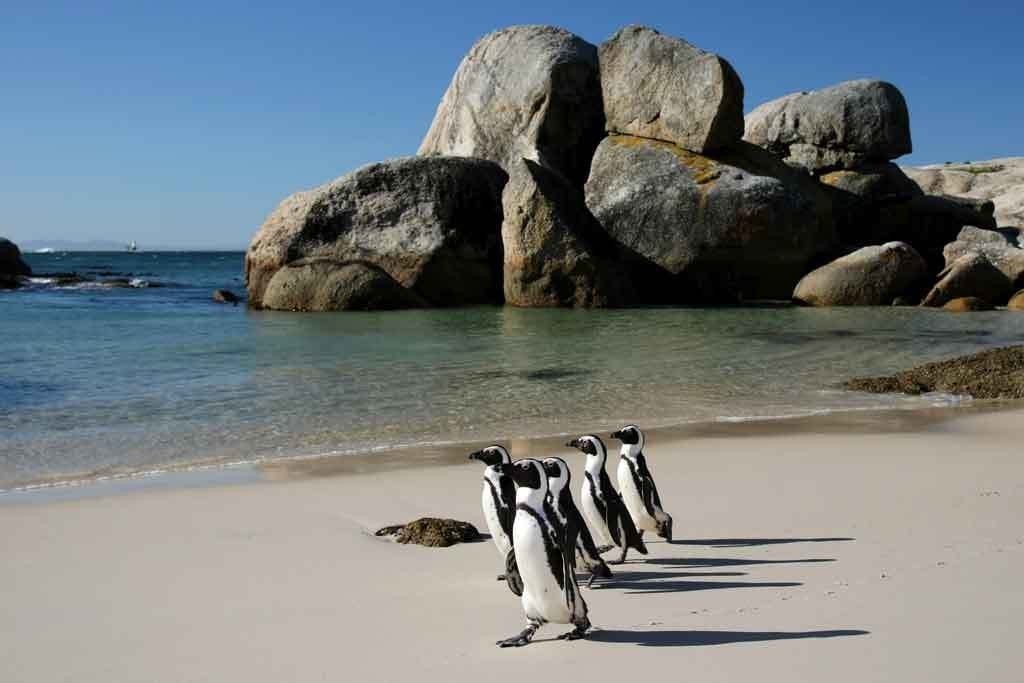
Boulders Beach, located in Simonstown, 20 miles (32 kilometres) outside Cape Town, isn’t just a beach; it’s a nature reserve for South Africa’s quirky but endangered African penguins (Spheniscus demersus), formerly known as jackass penguins owing to the donkey-like braying sound they make. These birds have free reign along Boulders Beach, which is – appropriately – distinguished by massive, smooth granite boulders that provide shelter for both the birds and visiting sunbathers.
Although the bathing beach is separated from the penguins’ breeding area, don’t be surprised if the birds pop up next to you as they hunt for fish in the shallows. Boulders Beach, located in False Bay on the Cape Peninsula, has a magnificent backdrop – rows of Victorian town houses that are a remnant of the days Simonstown was a British naval base.
2Camps Bay
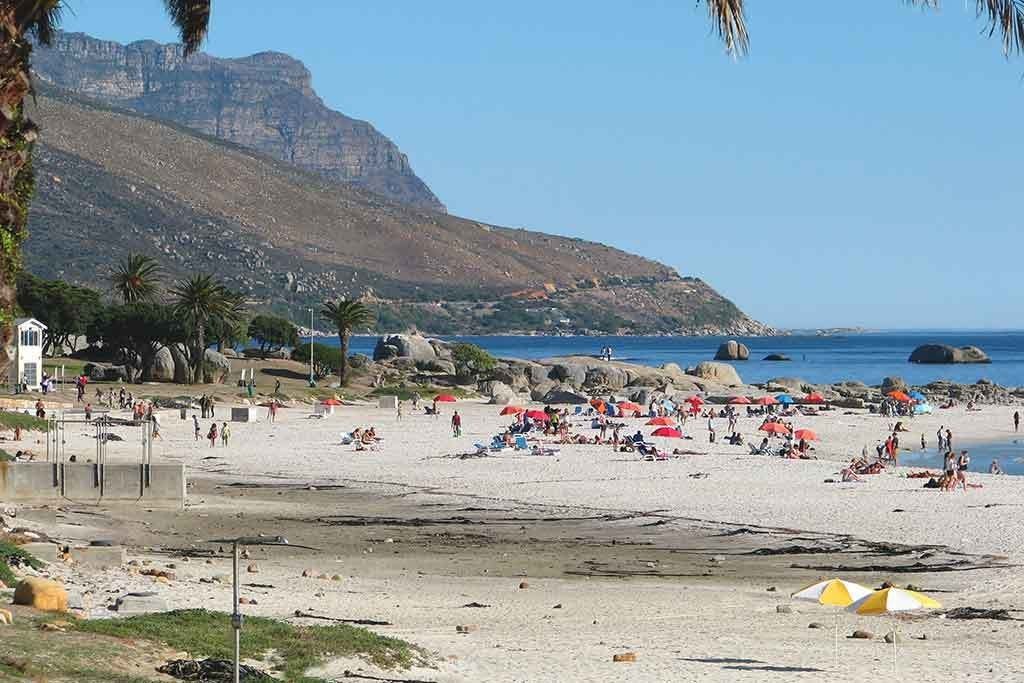
In terms of sheer beauty, palm tree-fringed Camps Bay, seven miles (11km) south-west of Cape Town, takes some beating. Ensconced between the waters of the Atlantic Ocean and the towering Twelve Apostles mountain range, which forms the spine of Table Mountain, it is a popular after-work picnic spot for locals in summer when the sun goes down after 10pm. Several trendy venues are based here such as the Bay Hotel and Blues restaurant, which specialises in fresh seafood.
Camps Bay wasn’t always a bustling settlement, however; when Dutch colonial administrator Jan van Riebeeck arrived in Cape Town in 1652, the Twelve Apostles was an untamed wilderness covered in forests and home to lion, leopard and various species of buck. The beach was named for sailor Ernst Friedrich von Kamptz from Prussia; he arrived in Cape Town in 1778 and married the owner of the farm that adjoined the bay.
3Clifton Beach
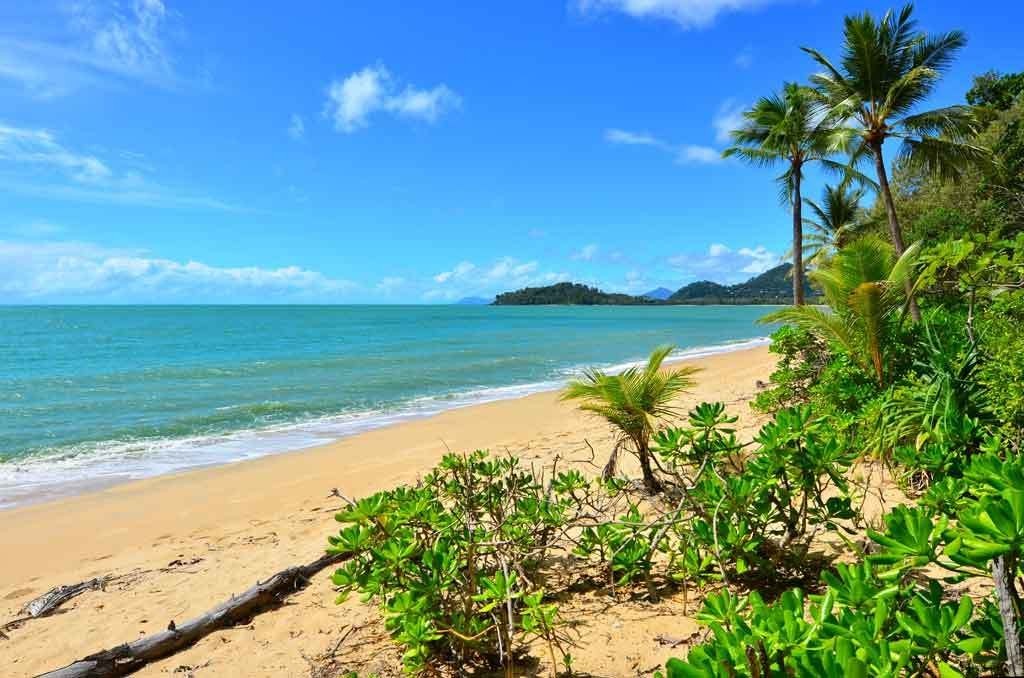
If you want to see a slice of Cape Town life at its most luxurious, head down to any one of the four beaches that make up Clifton Beach, just west of the city centre in the area known to Capetonians as the Atlantic seaboard (or the Cape Riviera). The waters may be chilly here – and the stairways down to the beaches are winding and steep – but the effort is worth it. White sands slope down into turquoise waters as beachgoers play volleyball and the rich (and sometimes even the famous) soak up Cape Town’s summer sun.
Any of the beaches provide an ideal spot for an evening picnic as the sunsets are spectacular. In the background, some of Cape Town’s most expensive mansions rise up sharply behind you, an ever-present reminder of the tremendous wealth this city attracts.
4Llandudno Beach
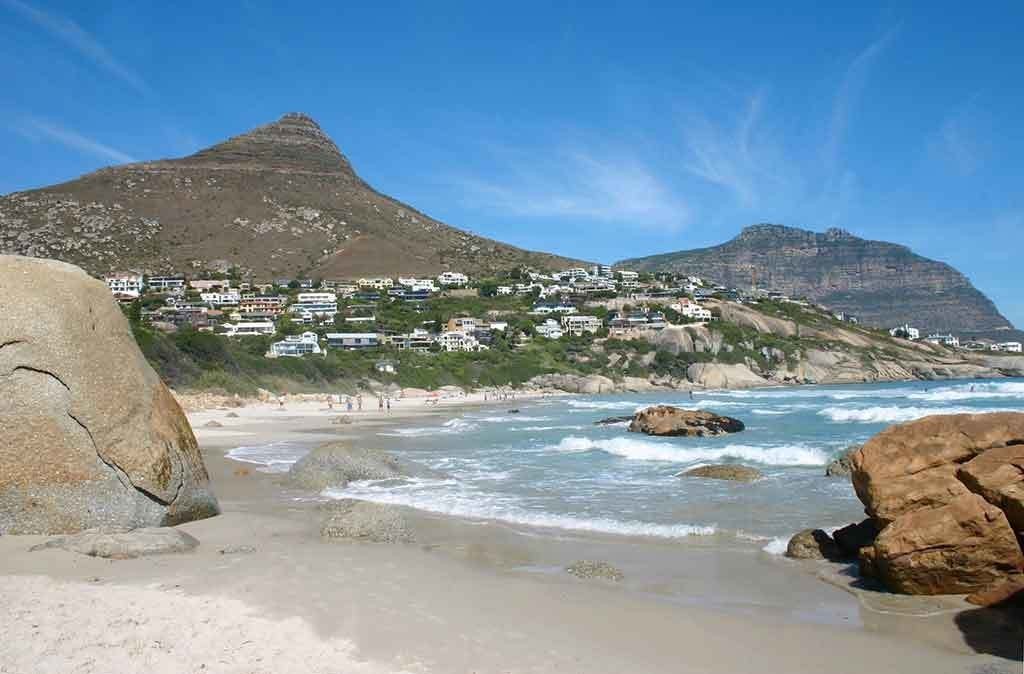
One of Cape Town’s best-kept secrets, Llandudno Beach is located in a cove at the bottom of a steep and winding road, not far from Hout Bay on the Atlantic seaboard. Space in the suburb’s official beach car park is severely limited, particularly on sunny weekends, but if you’re intent on seeing the best Cape Town has to offer in terms of beaches, you shouldn’t miss this beauty spot.
Like many other beaches in the city and its surrounds, Llandudno is peppered with smooth granite boulders that provide shade during the hottest hours of the day; the views from the beach are particularly scenic. Surfing is popular in Llandudno but those wishing to swim should be aware that the water is chilly, even at the height of summer, and the currents can be treacherous.
5St James Beach
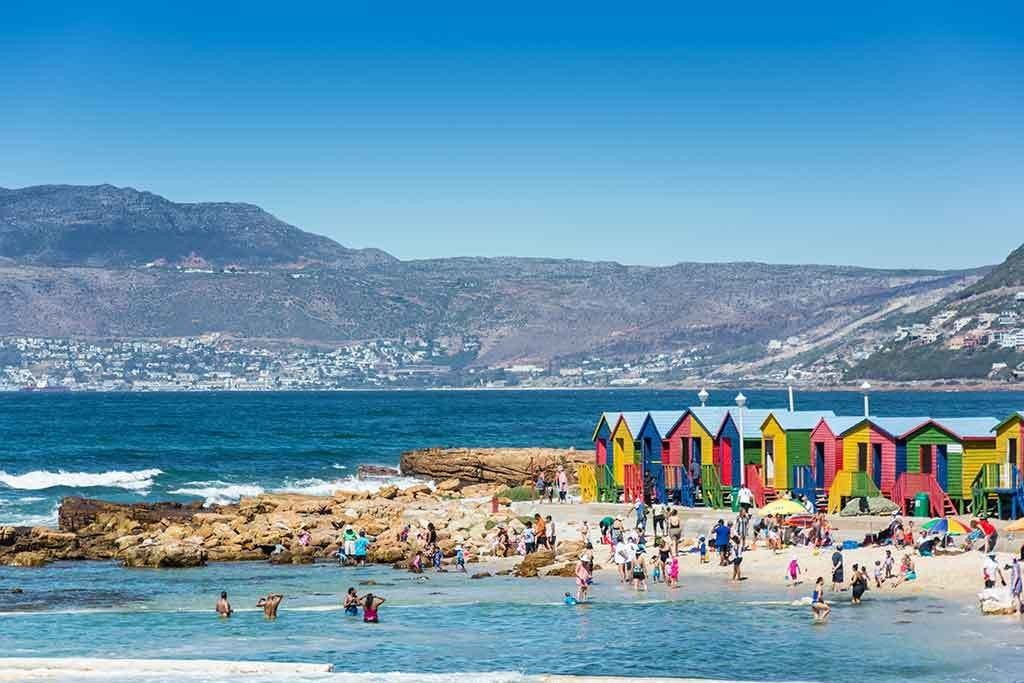
With bright multi-coloured beach huts, St James Beach is an iconic Cape Town landmark that features on countless calendars, postcards and travel brochures. The huts are small – and there aren’t many of them – but their vibrant colours can be seen from quite a distance in the best tradition of the British Empire’s Victorian seaside era. The ideal time to visit is at dawn, as the sun rises over False Bay, casting a warm glow over the huts.
In front of the colourful structures is a small tidal pool, popular among early rising locals; the pool is home to several fish and waterbirds – look out for the Cape cormorants that dart around, hunting fish, on quiet mornings. On summer afternoons and during weekends, the beach is popular among daytrippers and locals, and quickly becomes overcrowded.
[mapsmarker layer=”5″][:en]The South African city of Cape Town, spread out in front of Table Mountain, is rightly famed for its staggering natural beauty, which includes several inviting beaches. Each beach has its own charm and distinguishing characteristics, from Boulders Beach, which is known for its population of penguins, to the picturesque St James Beach with its multi-coloured huts. This article looks at the city’s top five beaches, and explains why they’re popular with locals and visitors.1Boulders Beach

Boulders Beach, located in Simonstown, 20 miles (32 kilometres) outside Cape Town, isn’t just a beach; it’s a nature reserve for South Africa’s quirky but endangered African penguins (Spheniscus demersus), formerly known as jackass penguins owing to the donkey-like braying sound they make. These birds have free reign along Boulders Beach, which is – appropriately – distinguished by massive, smooth granite boulders that provide shelter for both the birds and visiting sunbathers.
Although the bathing beach is separated from the penguins’ breeding area, don’t be surprised if the birds pop up next to you as they hunt for fish in the shallows. Boulders Beach, located in False Bay on the Cape Peninsula, has a magnificent backdrop – rows of Victorian town houses that are a remnant of the days Simonstown was a British naval base.
2Camps Bay

In terms of sheer beauty, palm tree-fringed Camps Bay, seven miles (11km) south-west of Cape Town, takes some beating. Ensconced between the waters of the Atlantic Ocean and the towering Twelve Apostles mountain range, which forms the spine of Table Mountain, it is a popular after-work picnic spot for locals in summer when the sun goes down after 10pm. Several trendy venues are based here such as the Bay Hotel and Blues restaurant, which specialises in fresh seafood.
Camps Bay wasn’t always a bustling settlement, however; when Dutch colonial administrator Jan van Riebeeck arrived in Cape Town in 1652, the Twelve Apostles was an untamed wilderness covered in forests and home to lion, leopard and various species of buck. The beach was named for sailor Ernst Friedrich von Kamptz from Prussia; he arrived in Cape Town in 1778 and married the owner of the farm that adjoined the bay.
3Clifton Beach

If you want to see a slice of Cape Town life at its most luxurious, head down to any one of the four beaches that make up Clifton Beach, just west of the city centre in the area known to Capetonians as the Atlantic seaboard (or the Cape Riviera). The waters may be chilly here – and the stairways down to the beaches are winding and steep – but the effort is worth it. White sands slope down into turquoise waters as beachgoers play volleyball and the rich (and sometimes even the famous) soak up Cape Town’s summer sun.
Any of the beaches provide an ideal spot for an evening picnic as the sunsets are spectacular. In the background, some of Cape Town’s most expensive mansions rise up sharply behind you, an ever-present reminder of the tremendous wealth this city attracts.
4Llandudno Beach

One of Cape Town’s best-kept secrets, Llandudno Beach is located in a cove at the bottom of a steep and winding road, not far from Hout Bay on the Atlantic seaboard. Space in the suburb’s official beach car park is severely limited, particularly on sunny weekends, but if you’re intent on seeing the best Cape Town has to offer in terms of beaches, you shouldn’t miss this beauty spot.
Like many other beaches in the city and its surrounds, Llandudno is peppered with smooth granite boulders that provide shade during the hottest hours of the day; the views from the beach are particularly scenic. Surfing is popular in Llandudno but those wishing to swim should be aware that the water is chilly, even at the height of summer, and the currents can be treacherous.
5St James Beach

With bright multi-coloured beach huts, St James Beach is an iconic Cape Town landmark that features on countless calendars, postcards and travel brochures. The huts are small – and there aren’t many of them – but their vibrant colours can be seen from quite a distance in the best tradition of the British Empire’s Victorian seaside era. The ideal time to visit is at dawn, as the sun rises over False Bay, casting a warm glow over the huts.
In front of the colourful structures is a small tidal pool, popular among early rising locals; the pool is home to several fish and waterbirds – look out for the Cape cormorants that dart around, hunting fish, on quiet mornings. On summer afternoons and during weekends, the beach is popular among daytrippers and locals, and quickly becomes overcrowded.
[mapsmarker layer=”2″][:]